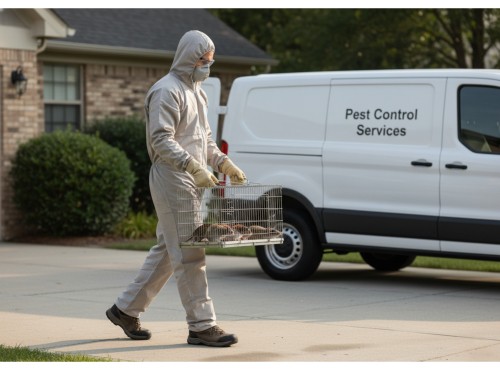Step 1: Comprehensive Site Assessment
Every inspection begins with environmental mapping and vulnerability assessment. Using ventral inspection techniques, PMPs evaluate sub-deck zones, patios, and foundation voids. They document evidence through photographs and digital sketches, forming part of a regulatory-compliant service logbook.
Common sustaining conditions include:
- Overflowing refuse bins and compactors near food service lanes.
- Standing water or leaking sump drains.
- Storage clutter in basements providing shelter.
- Unsealed soffit gaps or open weep holes.
By identifying these conducive elements early, technicians can design exclusion and sanitation programs tailored to each property’s architecture.
Step 2: Visual Indicators and Monitoring Tools
Visual clues remain central to diagnostic accuracy. Droppings, rubbing marks, and gnaw patterns reveal both the scale and timing of activity. Moist, soft droppings indicate current presence, while desiccated fecal pellets suggest historical routes.
Professional monitoring employs several instruments:
- Glue boards and multi-catch traps along travel paths.
- Tamper-resistant stations that record feeding activity.
- UV tracking dust or fluorescent powder to map nocturnal runways.
- Digital trend-analysis platforms capturing temperature, humidity, and movement data.
At bustling intersections such as Bay & King Street, technicians rely on these metrics to classify pest-pressure zones and refine treatment thresholds in accordance with Health Canada PMRA and NPMA IPM standards.
Step 3: Environmental and Structural Mapping
Following the confirmation of active rodent activity, Pest Management Professionals (PMPs) develop a detailed structural map of the property. This phase identifies entry points, food sources, burrow networks, and nesting zones using tools such as thermal imaging cameras, moisture meters, and UV-marked tracking data.
In dense downtown environments like University Avenue & Queen Street or Front Street & Jarvis Street, rats often utilize storm drains, delivery tunnels, and aging ventilation shafts as interconnected travel routes. This urban matrix allows colonies to migrate laterally between restaurants, retail shops, and residential basements.
PMPs plot these travel corridors on digital schematics, marking ingress and egress points, food attractants, and shelter sites. Each mapping document is attached to the service logbook and reviewed during follow-up visits to monitor colony displacement and bait-station performance.
A well-executed environmental map provides three primary benefits:
- Precision targeting – rodenticides and traps are positioned only where activity is verified.
- Reduced chemical footprint– non-target exposure is minimized under Health Canada PMRA guidelines.
- Performance analytics – technicians can track changes in activity using data-driven thresholds, ensuring continuous improvement without over-application.
Step 4: Assessment Documentation and Client Education
After each inspection and treatment phase, the PMP compiles a compliance-ready report. This document includes high-resolution photographs, activity summaries, exclusion recommendations, and corrective actions. The report is reviewed with property owners or facility managers to ensure transparency.
In commercial environments such as food courts near Eaton Centre, or café-lined streets like Queen Street West, this documentation is critical for maintaining compliance with Toronto Public Health inspection requirements.
The education component forms the cornerstone of prevention. Clients are briefed on:
- Waste management schedules and proper bin sanitation.
- Drain maintenance using enzymatic cleaners to prevent organic buildup.
- Seasonal exclusion measures, especially before winter, when rodent burrowing intensifies.
- Structural maintenance to correct gaps around utility lines or HVAC penetrations.
Educational engagement not only improves compliance but also aligns with NPMA’s “Partnership in Public Health” initiative, which emphasizes client participation in long-term Integrated Pest Management (IPM) success.









